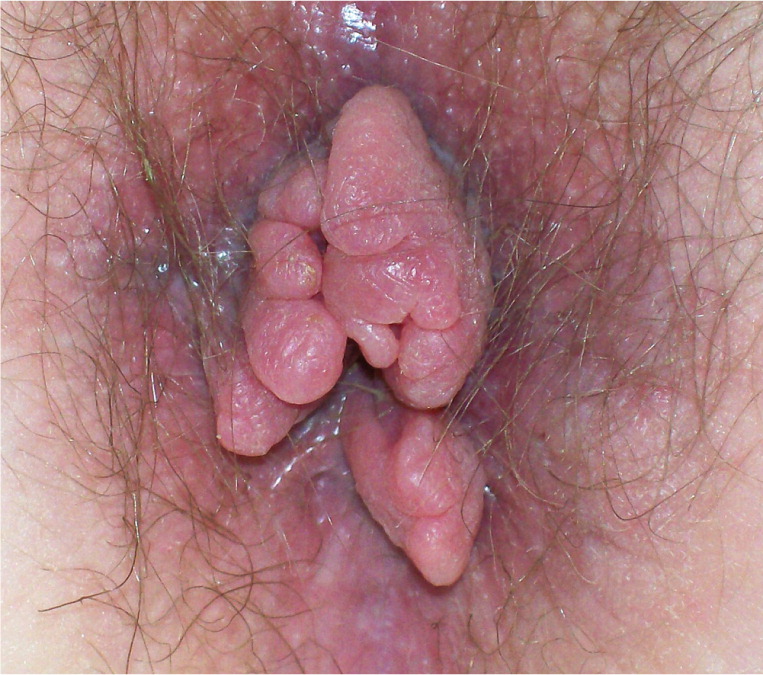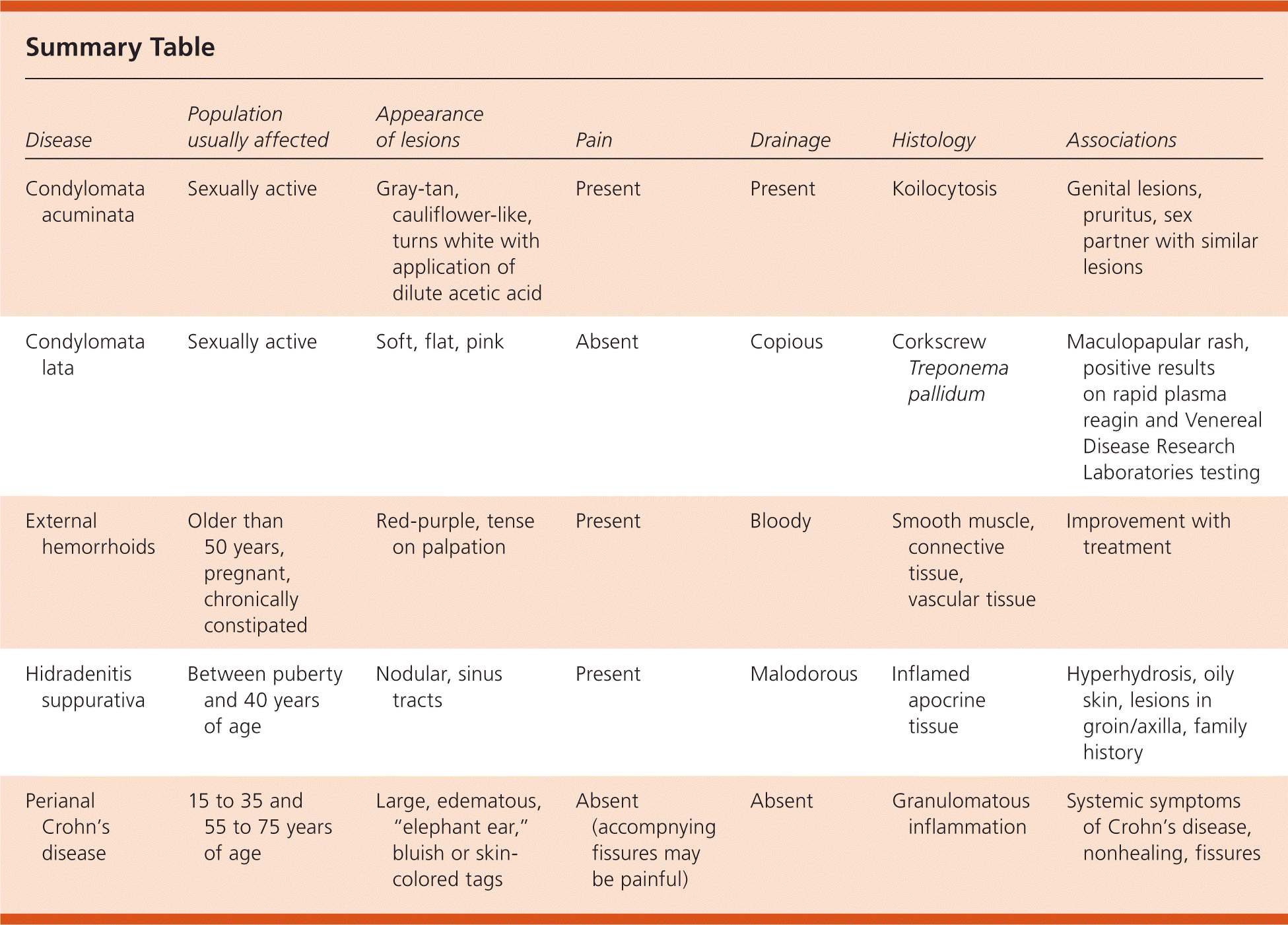
Am Fam Physician. 2010;82(4):419-421
The opinions and assertions contained herein are the private views of the authors and are not to be construed as official or as reflecting the views of the U.S. Army Medical Department or the U.S. Army Service at large.
Author disclosure: Nothing to disclose.
A 28-year-old, previously healthy woman presented with several weeks of painful defecation accompanied by a small amount of bleeding. Examination revealed an anal fissure in the anterior position. After several months of conservative treatment with sitz baths, stool softeners, and increased fluid intake, the fissure had not healed. She experienced more pain, bleeding with every bowel movement, and the formation of a nontender skin tag in the anterior position. Topical nitroglycerin and topical diltiazem were not effective, and she continued to develop tags and circumferential fissures (see accompanying figure).

Question
Discussion
The answer is E: perianal Crohn's disease manifested as anal fissures and “elephant ear” skin tags. Crohn's disease is a chronic, transmural disease that can affect any part of the alimentary canal, from the mouth to the perianal tissue.1 The prevalence of Crohn's disease is 26 to 198 per 100,000 persons.1 The disease has a bimodal distribution, with peaks at 15 to 35 and 55 to 75 years of age.2 The etiology is unknown, although genetic and environmental components that cause overactivation of T cells and tissue destruction are likely.3
Perianal disease is the initial sign of Crohn's disease in approximately 20 to 36 percent of persons and can precede active intestinal disease by months to years.4 In this patient, the usual symptoms of Crohn's disease (e.g., diarrhea, weight loss, fever, abdominal pain) were absent at initial presentation.
Lymphatic obstruction from Crohn's disease can cause large, nontender, thick, and bluish or skin-colored perianal skin tags.5 Removal of these skin tags can be associated with poor wound healing.6 Perianal fissures from Crohn's disease tend to occur outside of the anterior/posterior midline and be wide, deep, multiple, and refractory to conservative treatment.
Condylomata acuminata are caused by the human papillomavirus and can appear in the perianal area as gray-tan, cauliflower-like growths that may become very large.7 The patient history may reveal a sex partner with similar lesions. Lesions will turn white with application of dilute acetic acid.8 Pruritus, pain, bleeding, and anal discharge are common symptoms.
Condylomata lata are painless, soft, flat, pink lesions caused by secondary syphilis that may appear in the perianal region.7 The lesions often occur at the same time as the maculopapular rash of secondary syphilis, can produce a large amount of copious discharge, and are highly infectious. Rapid plasma reagin and Venereal Disease Research Laboratories test results are usually positive.
External hemorrhoids are enlarged, painful veins associated with constipation or straining, and are most common in persons older than 50 years and pregnant women.9 They are often noticed when they become thrombosed, and are purple-red and tense on palpation. A nontender anal tag may remain after the resolution of hemorrhoids.
Hidradenitis suppurativa is caused by inflammation of the apocrine sweat glands. It can appear in the anal region as painful nodules with a malodorous discharge. Onset occurs after puberty and before 40 years of age and is associated with hyperhidrosis and oily skin.10 One third of patients with hidradenitis suppurativa have a family history of the condition.10 Axillary and groin involvement are often present.

| Disease | Population usually affected | Appearance of lesions | Pain | Drainage | Histology | Associations |
|---|---|---|---|---|---|---|
| Condylomata acuminata | Sexually active | Gray-tan, cauliflower-like, turns white with application of dilute acetic acid | Present | Present | Koilocytosis | Genital lesions, pruritus, sex partner with similar lesions |
| Condylomata lata | Sexually active | Soft, flat, pink | Absent | Copious | Corkscrew Treponema pallidum | Maculopapular rash, positive results on rapid plasma reagin and Venereal Disease Research Laboratories testing |
| External hemorrhoids | Older than 50 years, pregnant, chronically constipated | Red-purple, tense on palpation | Present | Bloody | Smooth muscle, connective tissue, vascular tissue | Improvement with treatment |
| Hidradenitis suppurativa | Between puberty and 40 years of age | Nodular, sinus tracts | Present | Malodorous | Inflamed apocrine tissue | Hyperhydrosis, oily skin, lesions in groin/axilla, family history |
| Perianal Crohn's disease | 15 to 35 and 55 to 75 years of age | Large, edematous, “elephant ear,” bluish or skin- colored tags | Absent (accompnying fissures may be painful) | Absent | Granulomatous inflammation | Systemic symptoms of Crohn's disease, nonhealing, fissures |
